This article was medically reviewed by Theodore Leng, MD. Dr. Leng is a board certified Ophthalmologist and Vitreoretinal Surgeon and an Assistant Professor of Ophthalmology at Stanford University. He completed his MD and Vitreoretinal Surgical Fellowship at Stanford University in 2010. Dr. Leng is a Fellow of the American Academy of Ophthalmology and the American College of Surgeons. He is also a member of the Association for Research in Vision and Ophthalmology, the Retina Society, the Macula Society, the Vit-Buckle Society, as well as the American Society of Retina Specialists. He received the Honor Award by the American Society of Retina Specialists in 2019.
There are 8 references cited in this article, which can be found at the bottom of the page.
This article has been viewed 191,670 times.
Your inter-pupillary distance (PD) is the distance between your pupils, measured in millimeters. Eye doctors always measure this distance to ensure an accurate fit when they write prescriptions for eyeglasses. The average adult PD is 62 millimeters, though the normal range for most individuals is between 54 and 74 millimeters.[1] You can measure your PD at home by yourself or with the help of a friend, or you can have it done professionally by an eye doctor.
Steps
Measuring Your Own Inter-Pupillary Distance at Home
-
1Grab a ruler with millimeter units. In order to measure your PD at home, you will need a ruler that has millimeter units.[2] If you do not have a ruler at home, you can print out a PD measurement ruler online from many vision center and eyeglass retail websites. Just be sure that when you print the page you set your printer so that it does not scale the image.[3]
- Some online eyeglass retailers use programs that allow you to photograph yourself holding a credit card up to your face for scale, but most require you to manually measure the distance.[4]
-
2Stand in front of a mirror. If you're measuring your own PD, you'll need to use a mirror. Make sure that you're in a well-lit area so that you can line up the ruler and see the ruler markings. In order to get a good reading, you'll need to stand approximately eight inches (20 centimeters) from the mirror.[5]
- Hold the ruler right above your eyes, straight across your eyebrows.
- Keep your head straight and upright to ensure a proper measurement.
Advertisement -
3Close your right eye to center your left pupil. It's easiest to measure one eye at a time by closing the other eye. Start by closing your right eye and holding the zero millimeter mark right above the exact center of your left pupil. Try to get an exact alignment with the zero mark, as this could alter the reading for your whole measurement.[6]
-
4Read and measure the distance to your right pupil. Without moving your head or the ruler at all, open your right eye and find the exact millimeter mark that falls on your right pupil. Make sure you're looking straight ahead at the mirror to ensure an accurate reading. The number (in millimeters) that lines up with the center of your pupil, or as close to center as you can measure, is your PD.[7]
- It's best to try remeasuring your PD three or four times to make sure that your reading is consistently accurate.[8]
Getting Your Inter-Pupillary Distance Measured By a Friend
-
1Stand close to your friend and face one another. You should stand approximately 8 inches (20 centimeters) away from your friend, just as you would stand if you were measuring your own PD in the mirror.[9] Do not stand too close or too far away to ensure an accurate reading.
-
2Look above your friend's head. Unlike measuring your own PD in the mirror (where you can't avoid looking at your own reflection), having a friend measure your PD requires you to look past that individual. Try having your friend crouch or sit in front of you while you stand so that she is outside your field of vision, and stare at something in the distance about 10 to 20 feet away.[10]
-
3Have your friend take your measurements. You'll need to keep your eyes perfectly still while your friend measures your PD. They should line the ruler up just as you would on yourself in the mirror. Your friend should align the zero millimeter mark with the center of one pupil and measure across where the center of your other pupil falls.[11]
Having Your Inter-Pupillary Distance Measured By An Eye Doctor
-
1Schedule an appointment with your eye doctor. Having your PD measured by an eye doctor will typically require an appointment. While you're there, your eye doctor will most likely want to test your vision to make sure that your optical prescription is up to date. This may include testing your eye muscles, visual acuity, visual field, as well as a refraction and retinal exam.[12]
- If you do not yet have an eye doctor, you can find one in your area by searching online or checking your local phone book.
- If you've had your vision tested within the last year, you shouldn't need a new vision exam. The eye doctor who performed your vision test may also have your PD in your chart from the previous exam.
-
2Have your pupil size measured. Depending on the tests you have done, your doctor may decide to check the size of your pupils using a digital pupillometer.[13] Your eye doctor may also choose to use an ocular measurement device.[14] Both of these handheld devices can measure the size of your pupil and the distance between your pupils.
- A pupillometer looks like a large pair of binoculars, and all you need to do is look through the lenses while your doctor takes your measurements.[15]
- An ocular measurement device may look like a digital camera, depending on the make and model used by your doctor.
-
3Leave with a prescription and your PD. The advantage of having an eye doctor measure your PD is that you will leave with both an accurate measurement and a valid prescription for your next pair of eyeglasses. Many online retailers require your PD and a prescription in order to sell you glasses, so having an up-to-date eye exam will simplify the process and ensure that you have the right prescription for your eyes.
Warnings
- Do not poke yourself in the eye. If working with a friend, make sure he or she is very careful in working around your eyes.⧼thumbs_response⧽
References
- ↑ https://www.glassesusa.com/prescription-guide
- ↑ http://www.zennioptical.com/measuring-pd-infographic
- ↑ http://static.zennioptical.com/media/Zenni-Optical-PD-Ruler.pdf
- ↑ https://www.warbyparker.com/pd/instructions
- ↑ http://static.zennioptical.com/media/Zenni-Optical-PD-Ruler.pdf
- ↑ http://static.zennioptical.com/media/Zenni-Optical-PD-Ruler.pdf
- ↑ http://static.zennioptical.com/media/Zenni-Optical-PD-Ruler.pdf
- ↑ http://www.zennioptical.com/measuring-pd-infographic
- ↑ http://static.zennioptical.com/media/Zenni-Optical-PD-Ruler.pdf
- ↑ http://www.zennioptical.com/measuring-pd-infographic
- ↑ http://www.zennioptical.com/measuring-pd-infographic
- ↑ http://www.mayoclinic.org/tests-procedures/eye-exam/details/what-you-can-expect/rec-20189669
- ↑ http://www.slideshare.net/indrapsharma/measuring-interpupillary-distance
- ↑ http://www.ophthalmologyweb.com/25212-Ocular-Measurement-Device/5509416-Volk-Eye-Check-Handheld-Ocular-Measurement-Device/?ncatid=5897&ppim=5509416_1_0
- ↑ http://www.medicalexpo.com/prod/essilor-instruments/product-70776-435127.html
About This Article
To measure your interpupillary distance, which is the space between your eyes, start by getting a ruler with millimeter units. Alternatively, print out a pupillary distance ruler from the internet, but make sure your printer doesn’t change the scale of the image. Stand about 8 inches from a mirror, and hold the ruler straight across your eyebrows. Close your right eye, and make sure the zero millimeter mark is exactly above the center of your left pupil. Then, open your right eye and look into the mirror to read the measurement in the center of your right eye. However many millimeters are between the middle of your eyes is your interpupillary distance. For more tips from our Medical co-author, including how to get a friend to help measure your interpupillary distance, read on!
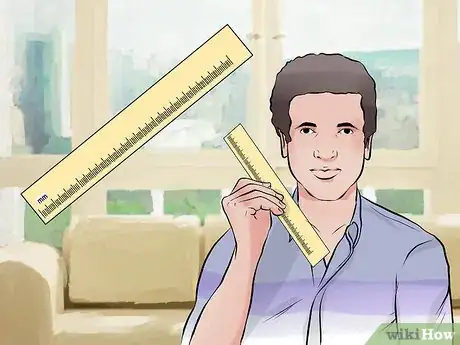
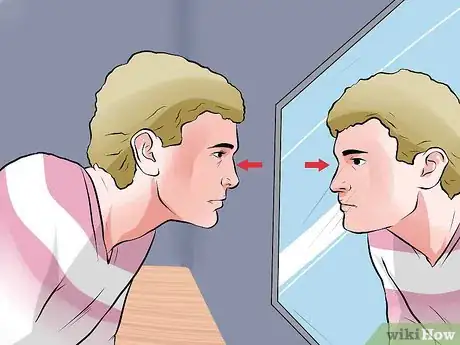
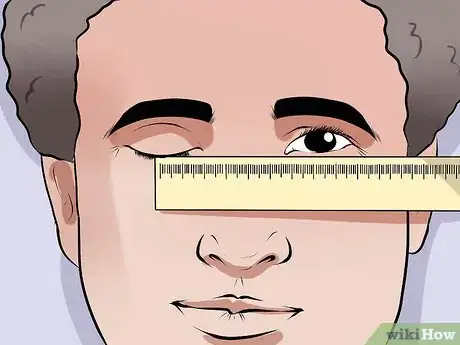
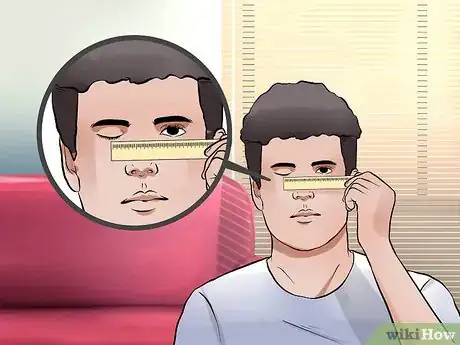


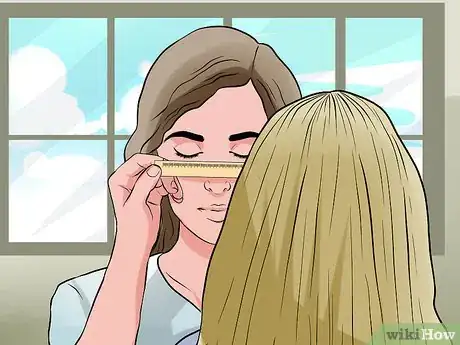

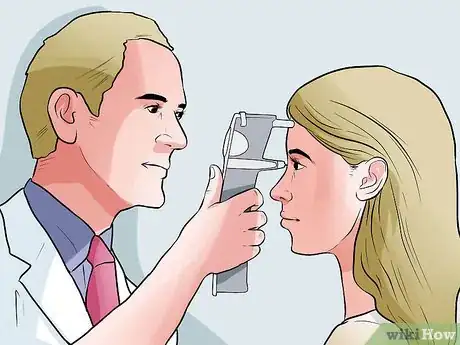





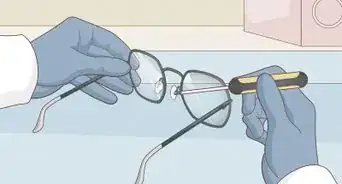

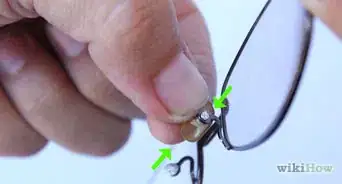




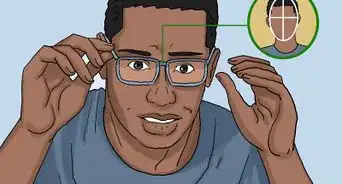








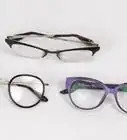





































Medical Disclaimer
The content of this article is not intended to be a substitute for professional medical advice, examination, diagnosis, or treatment. You should always contact your doctor or other qualified healthcare professional before starting, changing, or stopping any kind of health treatment.
Read More...